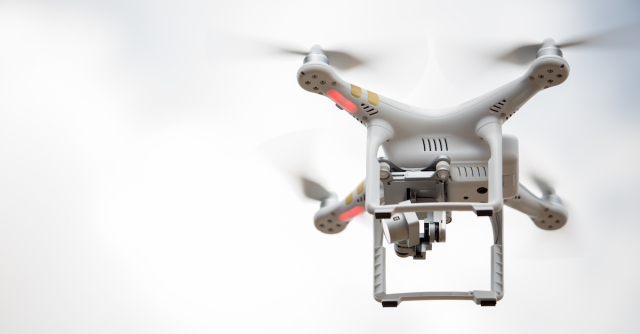Man arrested for shooting down drone over his property
 William Merideth’s 6-foot privacy fence didn’t keep a drone from flying over his property.
William Merideth’s 6-foot privacy fence didn’t keep a drone from flying over his property.
What did: his shotgun and three blasts of Number 8 birdshot.
The 47-year-old man from the US state of Kentucky was arrested on 26 July and charged with felony criminal mischief and wanton endangerment, for shooting down a $1,800 drone that was reportedly taking its maiden (and one assumes its last) voyage.
Merideth told the BBC that his daughters had come in from the back garden to tell him there was a drone flying overhead.
Merideth claims that the drone was hovering above his neighborhood, and when it moved over his property, he shot it down with his Benelli short-barrel shotgun.
Specifically, he maintains that the drone flew 20 feet over a neighbor’s house before ascending to “60 to 80 [feet] above me.”
 According to local news outlet WDRB News, police say Merideth told them he’d shot the drone in mid-air and that it had crashed in a field near his home.
According to local news outlet WDRB News, police say Merideth told them he’d shot the drone in mid-air and that it had crashed in a field near his home.
When Ars Technica asked him how long he observed the drone before pulling the trigger, Merideth sent this response by text message:
Not long, I watched it come in and when it stopped I took aim and fired.
But the drone’s pilot, David Boggs, has since provided Ars with a video that seemingly shows that his DJI Phantom 3 drone wasn’t nearly as close as the property owner made it out to be.
In fact, the telemetry provided by Boggs reportedly shows that his drone was in flight for barely 2 minutes before it was shot down, and that it was well over 200 feet above the ground before Merideth killed it.
Boggs claimed he was flying the drone to get pictures of a friend’s house.
But Merideth says that the aircraft did more than that:
He didn’t just fly over. If he had been moving and just kept moving, that would have been one thing – but when he come directly over our heads, and just hovered there, I felt like I had the right.
You know, when you’re in your own property, within a six-foot privacy fence, you have the expectation of privacy. We don’t know if he was looking at the girls. We don’t know if he was looking for something to steal. To me, it was the same as trespassing.
As Ars Technica’s Cyrus Farivar writes, the federal legal standard of how far into the air somebody’s private property rights extend is disputed.
In fact, the best case law on this issue dates back to 1946: long before drones were buzzing around our back yards (or getting in the way of firefighters, for that matter).
That’s when the Supreme Court decided, in United States v. Causby, that a North Carolina farmer had property rights up to 83 feet in the air and could thus seek compensation for military aircraft flying over his farm, disturbing his sleep and his chickens.
But as Farivar notes, that same court decision also specifically mentioned a “minimum safe altitude of flight” at 500 feet, which left anything between 83 feet and 500 feet as a legal grey area.
Fast forward to today, and the Federal Aviation Administration (FAA) has staked claims on all airspace, not just airspace above 83 or 500 feet.
From a statement that FAA spokesman Les Dorr sent to news outlets:
The FAA is responsible for the safety and management of US airspace from the ground up.
That statement was backed up by Peter Sachs, an attorney and drone advocate quoted by Ars:
There is no defined aerial trespass law. You do not own the airspace over your own property.
Dorr also noted that while the FAA disallows drones from flying over buildings, shooting them down poses a significant safety hazard:
An unmanned aircraft hit by gunfire could crash, causing damage to persons or property on the ground, or it could collide with other objects in the air.
The danger of mid-air collisions, in fact, is why California lawmakers recently proposed legislation that would jail and/or fine drone operators whose gadgets get in the way of emergency responders.
The proposed legislation would also exonerate those emergency responders for knocking drones out of the way.
They wouldn’t be shooting them down, though: rather, they’d be disabling the unmanned aircraft using jamming technology to prevent in-range drones from making and establishing a connection with the GPS signals and radio waves they rely on to operate.
Image of DJI Phantom 3 drone courtesy of Sarawut Chamsaeng / Shutterstock.com .
Article source: http://feedproxy.google.com/~r/nakedsecurity/~3/IufWMy91ro0/